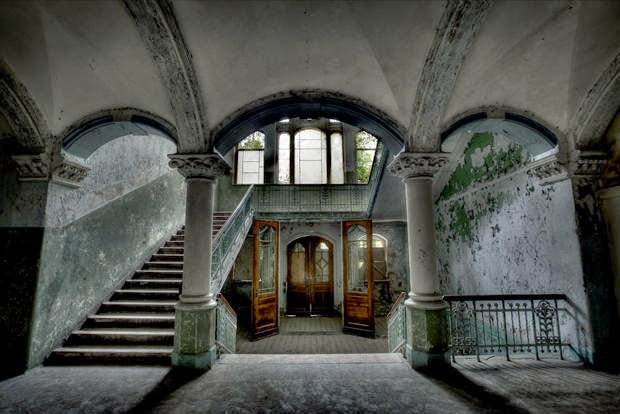The award winning Spectrum series 20th Anniversary Volume showcases the best fantastic art from the worlds most renowned illustration artists. Leafing through the pages reveals a kaleidoscope of pattern and colour, while the diverse range of imagery forms a compendium of Magic and Myth, of the nether regions of the imagination, where dragons and ghouls work their nefarious ends, and enticing fairies open windows on enchanted childhood Arcadias.
Imaginative reverie is the leitmotif, and in Mathieu Lauffray's illustration 'Treasure Island' I have envisaged the cavern as a totem of the psyche, and Long John Silver as a symbolic gatekeeper of the subconscious realms from whence emerges the raw material of creativity:
Perched atop a rough-hewn alter beneath a mysterious aboriginal idol, Long John Silver slumps languidly in an ornately carved ceremonial throne. His sheathed sword leans against his knee, and his eyes remain concealed behind the down turned brim of his hat. He is inscrutable, and the wonders stories might tell of his dark and treacherous deeds are written in the lines of his weathered face, etched in an expression of deep and troubled contemplation; or maybe he speaks to us from his dreams because they are also our own, dim, half remembered childhood fantasies.
Long John Silver, the mythological archetype, sits encircled by towering vaulted embankments that obscure him within a shadowy golden half-light. The craggy walls leap upwards into the hazy sunlit recesses of this primitive subterranean chamber. An ancient cavern redolent with an archaic and malodorous atmosphere and out of its misty vapour looms half formed shapes, peculiar echoes, and shadowy intimations.
Could he be sleeping, caught unaware while guarding some ancient buried treasure, and might we dare to approach? Aye now I recall, it is we who lie sleeping, the unconscious primal monad of his deeper dream! Beware! He reaches for his sword!
Title: Spectrum 20: The Best in Contemporary Fantastic Art
Author: Cathy Fenner and Arnie Fenner
ISBN: 9781599290676 (pbk.)
Published: 2013
Publisher: Fairfax, Calif. : Underwood Books
Leibniz's philosophy of mind




























